Grade characteristics of Yejia Coffee beans Fruit Tintin and Red Cherry Coffee Flavor
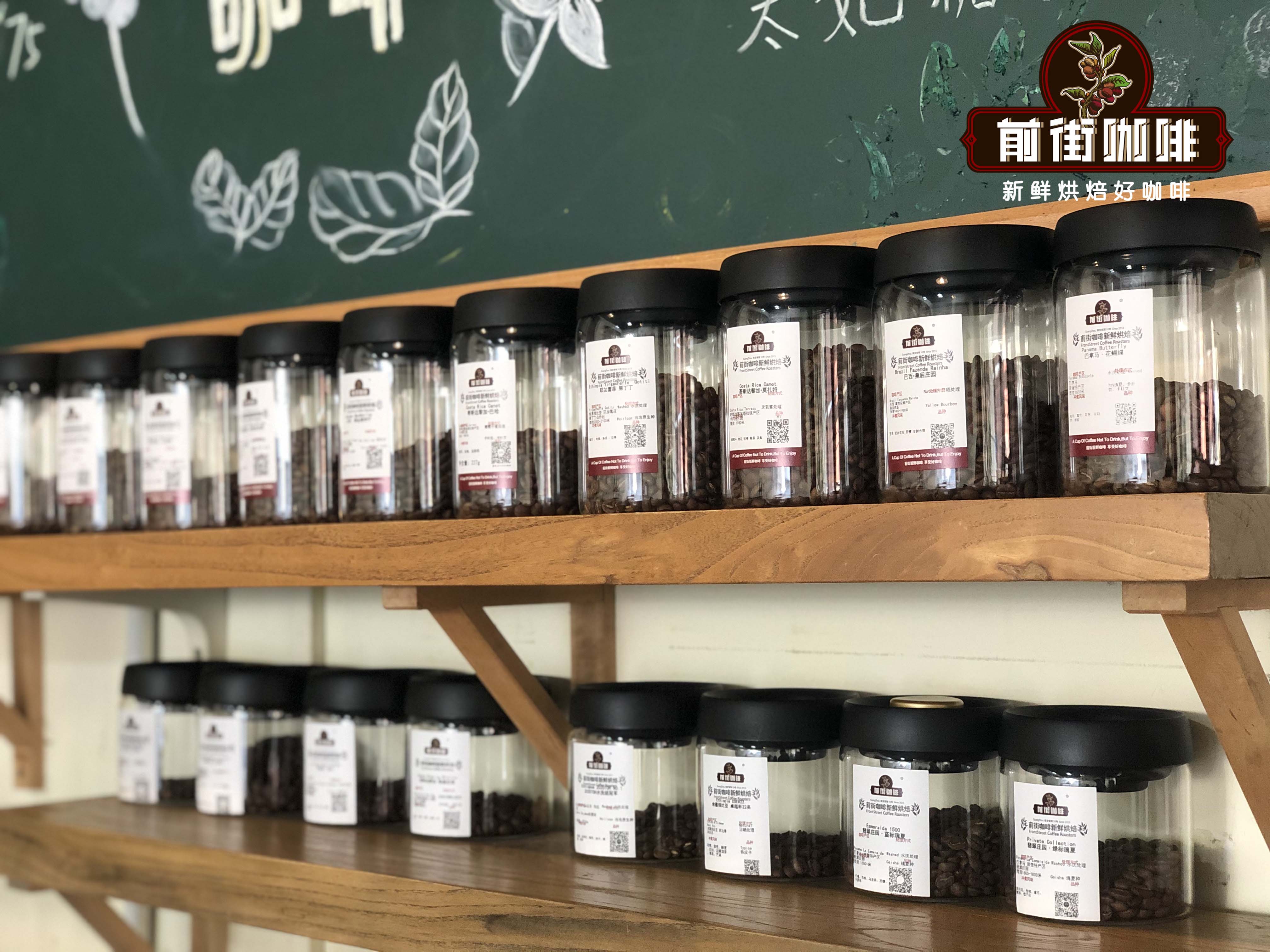
When it comes to the role of African coffee beans, people must be most familiar with Yega Xuefei coffee beans. The elegant floral aroma, bright and fresh acidity of Yejashafi coffee beans are impressive. In the coffee bean list of front street coffee, there are several kinds of Yejasefei coffee beans. You know, the previous street bean search model, if the same similar beans (origin and flavor), will not appear on a bean list. Therefore, Qianjie Coffee will tell you all about Yega Chefe Coffee.
Yejia Xuefei coffee producing area
Yejasuefi has always been one of the most important coffee producing areas in Ethiopia. It once belonged to the Sidamo coffee producing area, and later became an independent coffee producing area because of its unique flavor. It can be said that Yejashafi is not only a name of coffee producing area, but also a term for the description of specific coffee flavor. Yejia Xuefei coffee producing area is a high altitude coffee producing area, which is about 2000 meters above sea level. There are more than 40 cooperatives in the Yejashafi coffee producing area, which mainly manage coffee cultivation in a family business model.
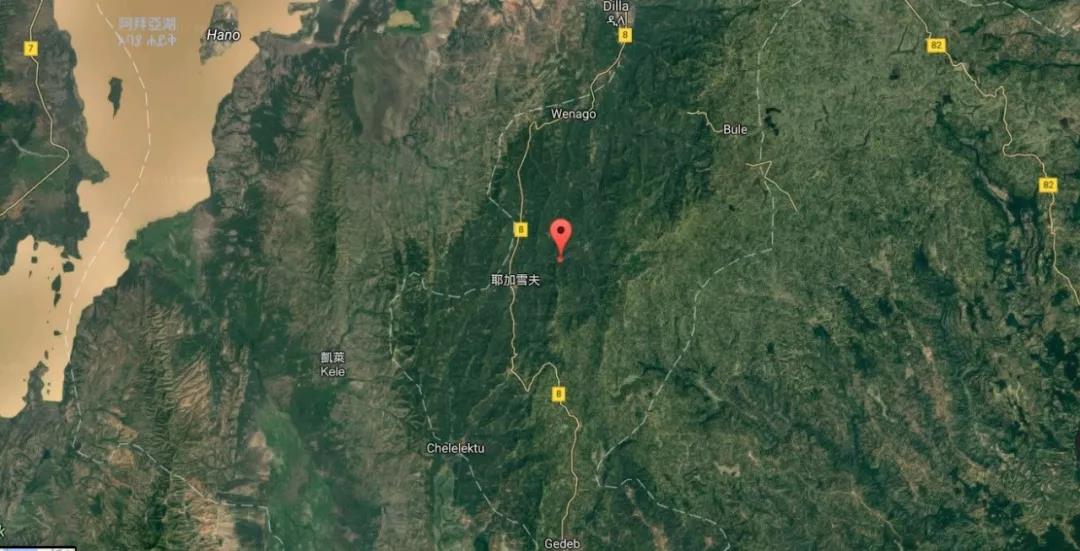
There are also many well-known micro-producing areas under the Yega Sheffield Coffee area, such as Cochel, Fog Valley, Godibe and so on. These micro-producing areas have excellent cooperatives, and the Yega Xuefei coffee beans have their own unique flavor. Qianjie Coffee takes a fancy to its unique characteristics and good quality in addition to its unique characteristics and good quality. Qianjie Coffee believes that each Yega Xuefei has its own unique flavor. for example, the tea aroma of Yega Xuefei fruit is very outstanding, the red cherry of Yejia Xuefei mainly plays berry fruit tone, and so on. Therefore, every type of coffee beans on the shelves of Qianjie Coffee, even if they come from the same coffee producing area, will show subtle differences if they are in different microclimate, management technology, planting and processing technology. this is also one of the purposes of Qianjie Coffee.

Yejia Xuefei coffee variety Yega Xuefei coffee variety is a local native species, small grain species, the appearance is more round, the bean body is very small, mostly between 14 and 15 orders. Ethiopia is known as the coffee natural gene bank, which has a wide variety, and it is difficult to identify and classify it. In addition, the Ethiopian government is unwilling to disclose information about these varieties because of the protection of natural coffee, so most of the coffee beans exported by Ethiopia are collectively referred to as "Heirloom" native species.
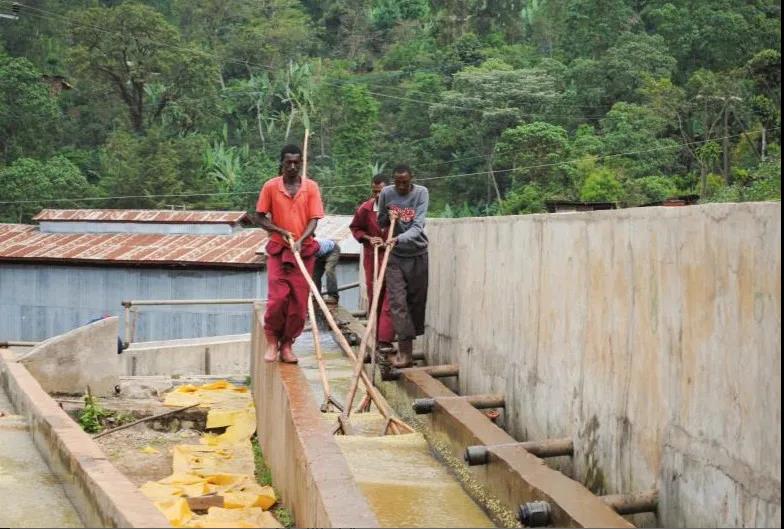
However, Qianjie Coffee found that in the COE competition held by Ethiopia this year, Ethiopia also began to divide the coffee varieties, of which the 13th place was the Kurme variety from the Yega Sheffield region. Kurume does not refer to a single variety, but a coffee variety formed by a long period of regional climate, soil and other environments in the Yegashafi region. The Kurume tree bears small fruit, high annual yield, rich sweetness and abundant flower fragrance. Kurume is widely cultivated in Guji and Yejasuefi areas.
In recent years, there have been many numbered varieties of coffee beans, such as 74110, 74158, and so on, which were actually developed by the JARC Jima Agricultural Research Center. 74 represents the classification and screening done in 1974, and the last three numbers are screening numbers.
Ye Jia Xuefei coffee bean classification
The grading system for Ethiopian coffee beans by ECX, the Ethiopian Commodity Exchange Ethiopian Commodity Exchange, established in 2012, is twofold.
On the one hand, the defect rate of coffee beans is graded. For every 300g of raw beans exported, the defective beans are less than 3, and the grade is G1. For every 300g of exported raw beans, there are 4-12 defective beans with a grade of G2.
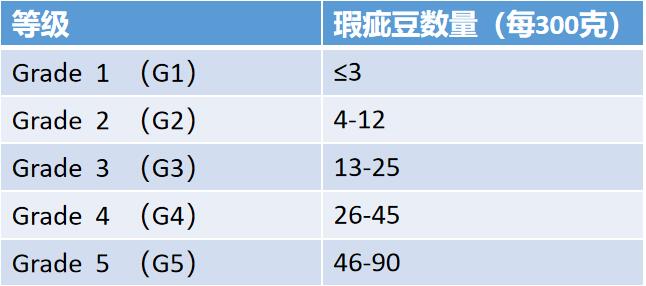
After the establishment of ECX (Ethiopia Commodity Exchange) in 2008, it was graded by the combination of physical properties of raw coffee beans and cup flavor characteristics.
ECX defines all coffees as unwashed and washed as three types:
a. The number of defects in Speciality is less, and the cup test has high flavor quality.
b. Commerical does not reach the boutique grade, but it is higher than the domestic consumption grade (Local / Domestic).
c. Local / domestic (Local / Domestic) coffee with relatively poor flavor caused by many defects (unripe beans), out-of-season and poor storage. (Ethiopia digests internally and does not circulate in the international market)
Among them, boutique and commerce are aimed at the export international market. The grading standards of different types are slightly different.
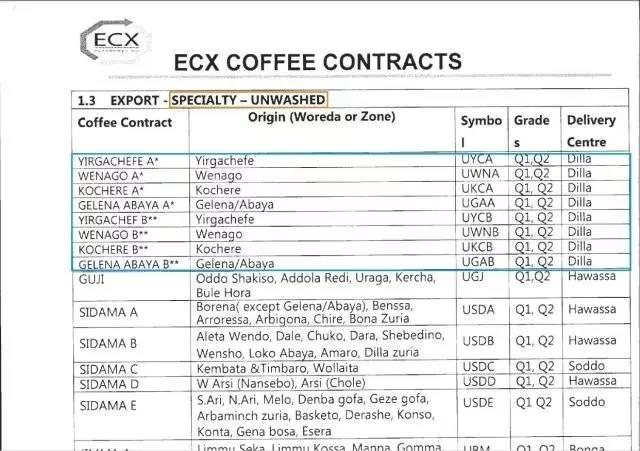
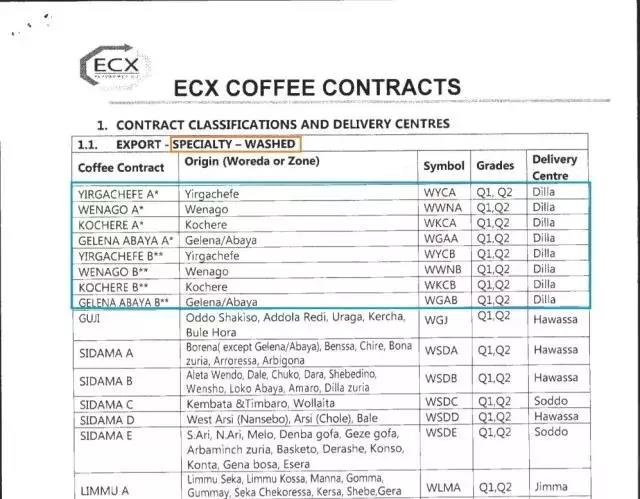
Coffee processing method
Ethiopia traditionally uses the ancient solarization method, but after the introduction of washing method in 1972, after decades, the use rate of washing method is much higher than that of solarization method. The coffee beans treated by washing method have reduced the degree of defects and are cleaner and more transparent in flavor.
Sun-drying is one of the oldest and most traditional methods of processing coffee fruits, which are dried in sunlight immediately after harvest. It is common in sunny or water-scarce areas, such as Ethiopia, where nearly 70% of coffee fruits are sun-dried. Qianjie believes that compared with washed coffee, sun coffee has lower acidity, higher sweetness, clear touch, but slightly lower cleanliness. Flavors produce more berry tones and are more complex.
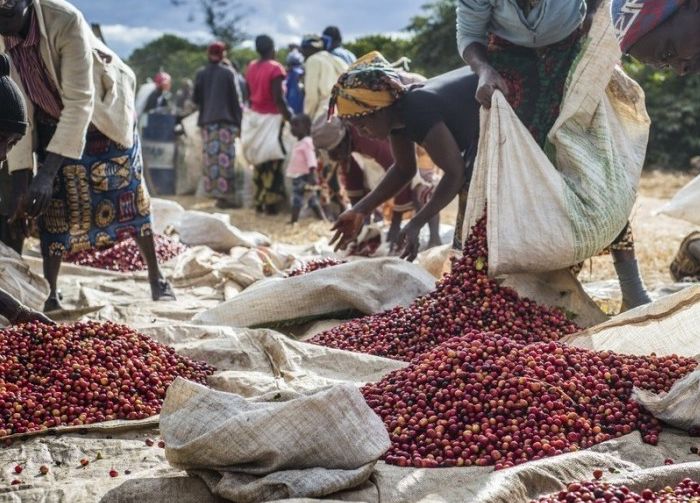
Yega Xuefei sun treatment is that after screening the available coffee berries, the whole coffee berries with intact pulp and peel are put into the elevated shed for sun treatment, which is precisely this kind of greenhouse drying method which invests in high-intensity labor, isolates contact with the ground, prevents the miscellaneous smell of soil in the process of sun exposure, and creates an unusually clean fruit flavor. After more than two weeks of sun exposure, the dark brown coffee fruit is stored professionally, waiting for the whole flavor to ripen. Before shipping, the coffee beans are taken out from the coffee berries, the sweetness can be imagined.
Washing treatment. After the peel / pulp of the berry is removed by a planer, it is placed in the fermentation tank for 18-36 hours until the pectin layer decomposes (depending on the local temperature and humidity), and then the shelled beans will be washed through the washing channel for 30-60 minutes. At this time, through the channel design combined with water erosion, the beans with low specific gravity and poor quality can be removed, and then the high quality beans with shells can be placed in an African scaffolding to dry for about 14 days. after drying, the beans will be stored in the warehouse of the treatment plant, and the shell beans will be transported to Dry Mill (dry treatment plant) to be shelled before export, and through a series of complicated screening processes, such as foreign body removal, silver peeling and polishing, gravity screening, color selection and so on. Finally, it is bagged and exported.
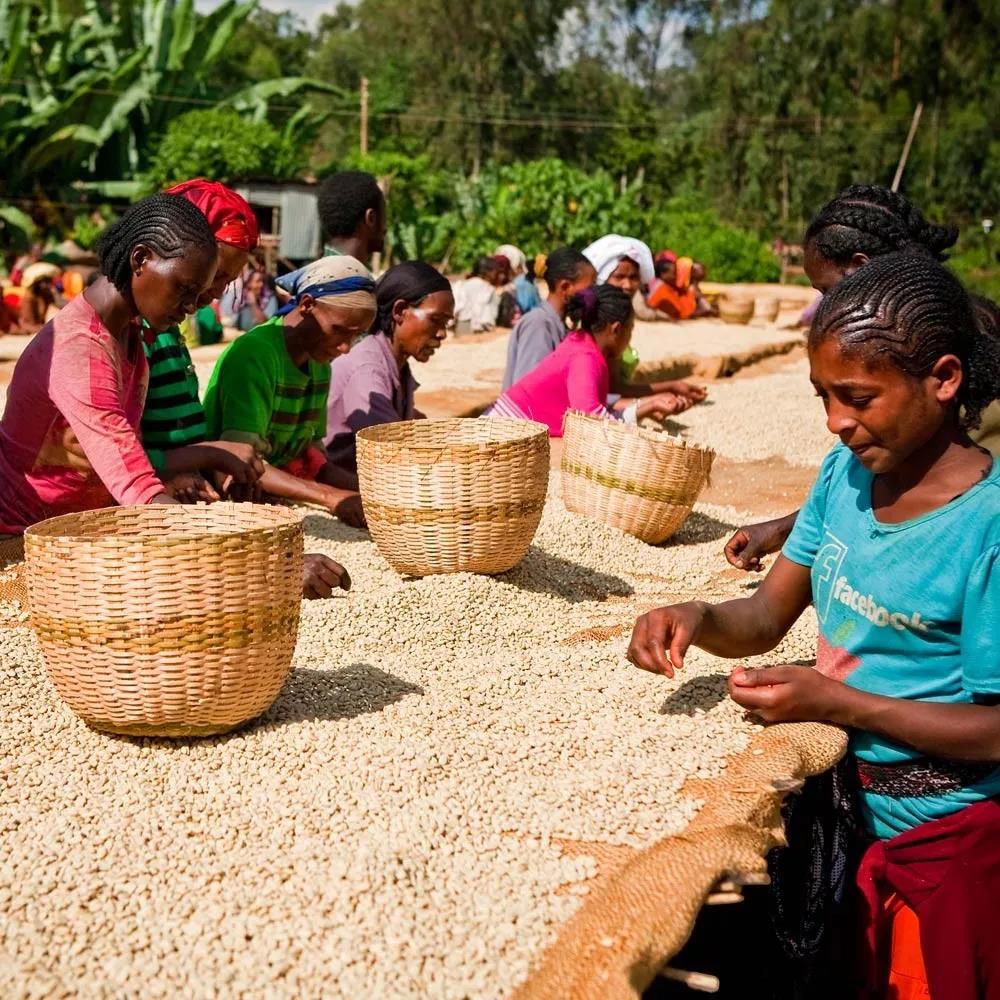
The most essential difference between the sun treatment and the water washing treatment is that the sun treatment retains the flavor of the pulp, while the water washing removes the flavor of the pulp and represents the most essential flavor of coffee beans. Can feel the obvious difference in the taste, washing is cleaner and brighter, while the sun will be rich in taste. Qianjie coffee is precisely because the washing method can reflect the most essential flavor of coffee beans, so every time when recommending coffee beans, if the guest tastes the coffee beans in this area for the first time, Qianjie coffee will give priority to the coffee beans treated by water washing. this can give people a clearer understanding of the flavor characteristics of the producing area.
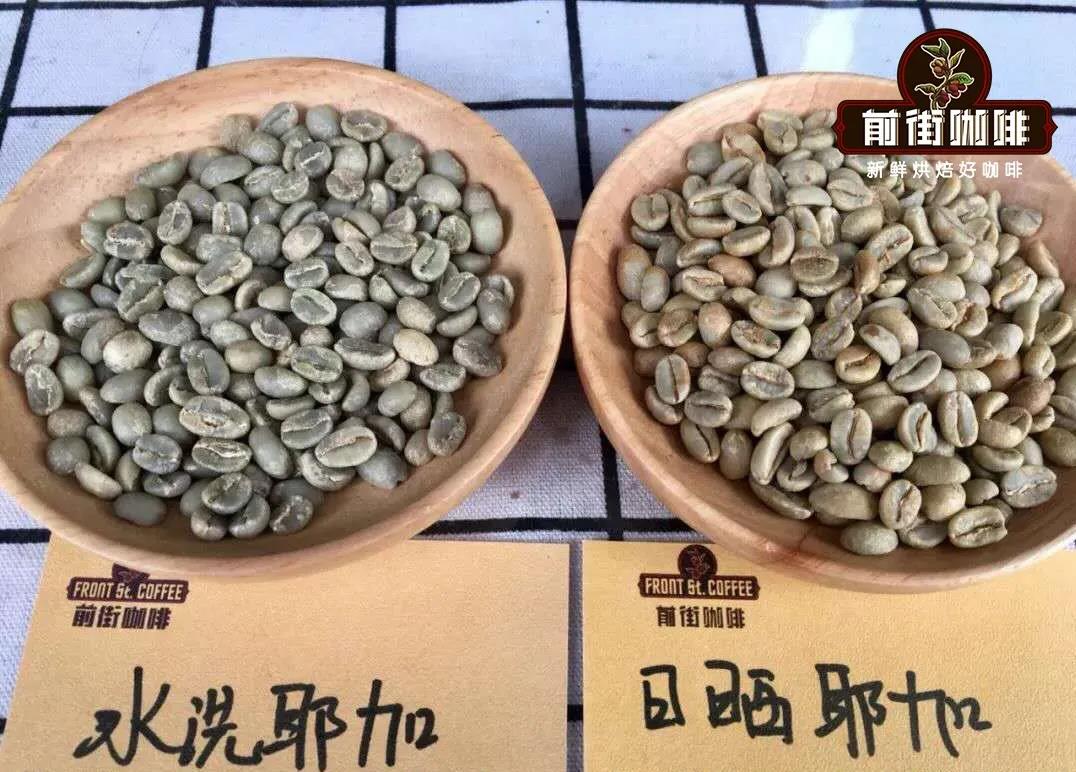
In the appearance is also easy to distinguish, raw beans washed coffee beans are generally turquoise, and the sun is yellowish green. The silver skin of the roasted washed coffee beans is obvious, while the sun-cured coffee beans have almost no silver skin residue, and the bean surface is relatively smooth. Then the following Qianjie coffee will introduce what kind of coffee beans there are in the sun and water in the front street.
Front Street Coffee Ye Jia Xuefei Sun Red Cherry Coffee
Country: Ethiopia
Region: Yega Xuefei
Processing plant: Altland
Altitude: 2300 m
Variety: native species
Treatment: sun treatment
Grade: G1
Flavor: berries, lemons, strawberries, fermented wine
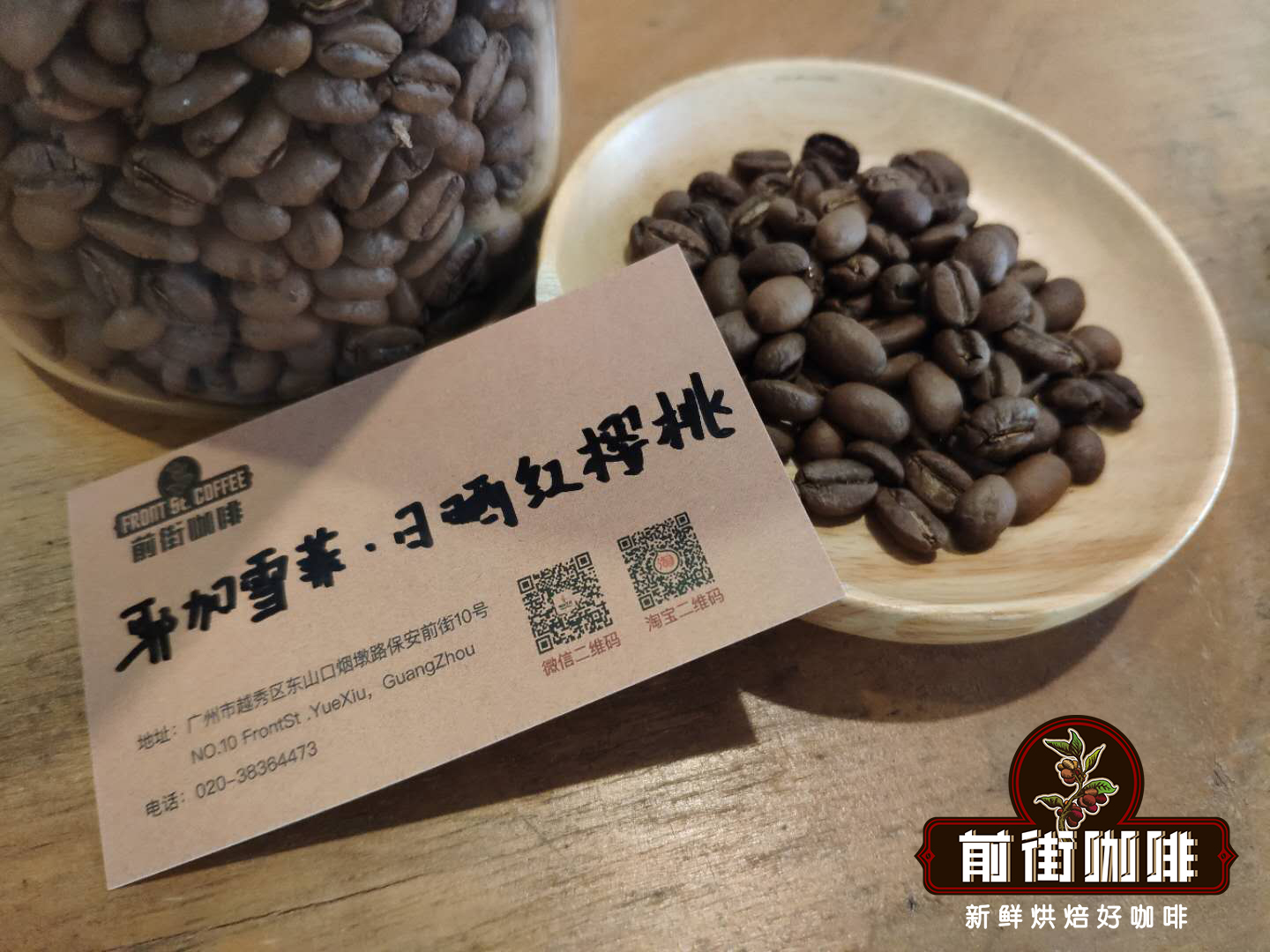
Red Cherry Project
Red Cherry Project, OPERATION CHERRY RED PROJECT, or OCR for short. Today, many cafes already sell red cherry coffee beans. The idea was first put forward by Trabocca, a Dutch raw bean trader, in 2007. Trabocca provided funding for the production conditions of the producing areas, as well as higher purchase prices to buy Ethiopian coffee fruits (CHERRY). Of course, they asked farmers to pick only fully ripe fruits.
Coffee turning red is a sign of its maturity, but the fruit on a tree will not ripen at the same time, before and after three months, because picking is more troublesome, if not required. In order to facilitate the reduction of picking times, farmers will pick red (mature) green (immature) coffee fruits together to deal with the factory. Sometimes when you look at the photos picked by machines in South America, you will often find that there are a lot of unripe fruits in them.
When raw bean merchants are willing to accept the beans at higher prices, farmers want higher incomes, and red cherries are born accordingly.
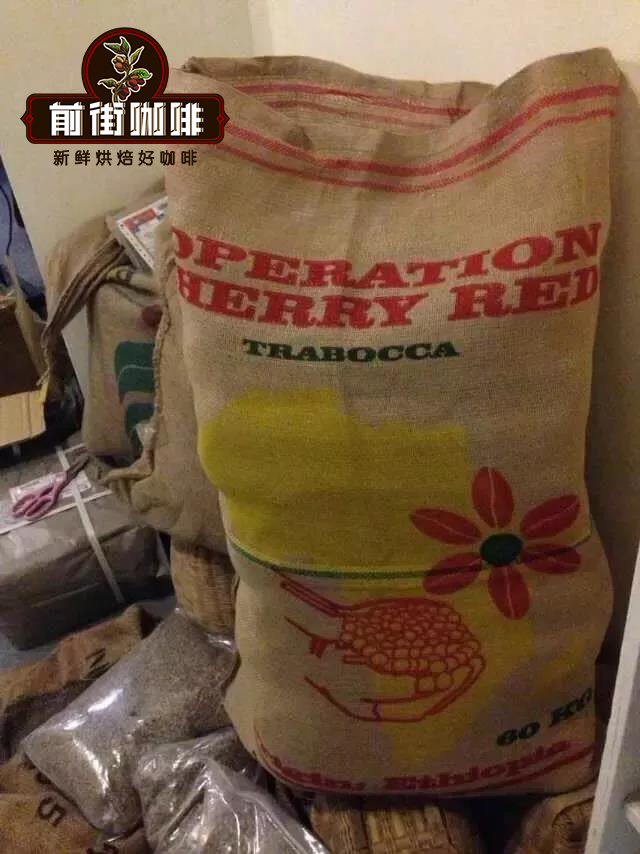
The Red Cherry program is also a reinforcement, causing farms to pay more attention to the process of selecting beans, and the prices of these coffees are relatively high. The Red Cherry Project invested $5000 in 2008 to purchase new sun drying racks. In 2009, another $8000 was invested in the procurement of new sun drying racks and sunshade nets. A $9000 generator was invested in 2010 and a further $10000 was invested in 2011 to improve some local coffee transport roads to make transporting coffee more convenient and efficient. Trabocca offers interest-free loans to buy new coffee cherry meat removers and coffee bean sorters. In order to facilitate suppliers' procurement, a high-quality Addis Ababa coffee cup testing laboratory was built with an investment of US $14000 in 2012.
Trabocca provides financial loan support, new hardware equipment and production processing knowledge and technology to help farmers improve their production, promising to pay generous prices as long as the quality of actual output meets the cup test standards in Ethiopia's Addis Ababa and Amsterdama Cup in the Netherlands. The passing standard set by Trabocca is 88 points.
The coffee beans of the Red Cherry Project are immediately packed in plastic inner bags (GrainPro bags or vacuum box) immediately after the processing of the origin is completed, then shipped to Djibouti for shipping. Strive for perfect quality through immediate monitoring, safe transportation and timely and appropriate handling. As a result of this red cherry program, roasters can buy high-quality coffee beans, improve the quality of Ethiopian coffee and have better prices. Trabocca can also return profits to farmers, and continue to improve and improve the quality.
The Red Cherry Project is mainly implemented in the producing areas of Yegashifi, Sidamo, Penga Forest, Lekanti, Kenbata, Irubabo, Hara, Lim, etc., all of which have unique flavor and can fully show the flavor of Ethiopian coffee. However, Qianjie Coffee believes that as long as it can be called boutique coffee grade coffee beans, basically adopt the red cherry program in the operation of coffee production.
Front Street Coffee Ye Jia Xuefei Aricha
Production area: Yega Xuefei Adorsi processing Plant
Altitude: 1900-2000m
Treatment method: insolation
Grade: G1
Variety: Heirloom native species
Flavor: it smells of ripe fruit, with obvious fermented aroma in the mouth, green lift, and a slight drop in temperature, with the acidity of lemon, the smoothness of cream and the juicy feeling of ripe grapes at the end.
The suntan group of the 2019 Ethiopia Harvest season Cup was won by the Adorsi processing plant.
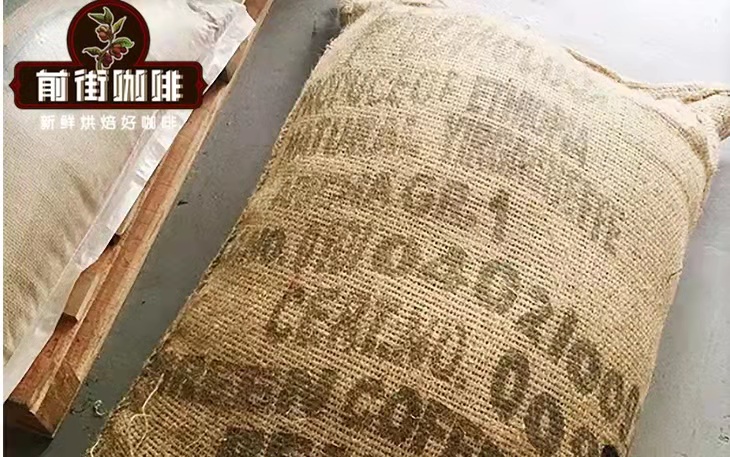
The Adorsi processing plant is owned by Testi Coffee. Testi Coffee, a coffee export company run by the Yonis family, was established in 2009 by Faysel A. Yonis. In terms of results, the winner's score fell to 91 points, compared with 88 points for Peony last year and 3 points higher for Adorsi in 2019.
This batch of Qianjie coffee comes from sun-dried beans from the Yega Sheffield Conga Cooperative, which is 1850-2050 meters above sea level.
The Konga Cooperative is made up of 1556 family members of small coffee farmers. It is located 5 kilometers south of Yega Sheffield. The average elevation of the coffee grown is more than 1800 meters. The harvest period is from October to February of the following year. The Konga Cooperative was founded in 1994 and joined the YCFCU Cooperative Union in 2002 to become one of the 26 unions located in the Gedeo region of southern Ethiopia. The name comes from the nearby Kongjia River and the local village of Kongjia. Front Street Coffee Yega Xuefei Fruit Ding Ding
Country: Ethiopia
Producing area: Yega Xuefei Gedeo Zone producing area
Altitude: 1900-2300m
Variety: original species (Heirloom)
Treatment: washing
Grade: G1
Flavor: citrus and black tea are imported. With the change of temperature, cream, caramel and almond are obvious and taste clean and sweet.
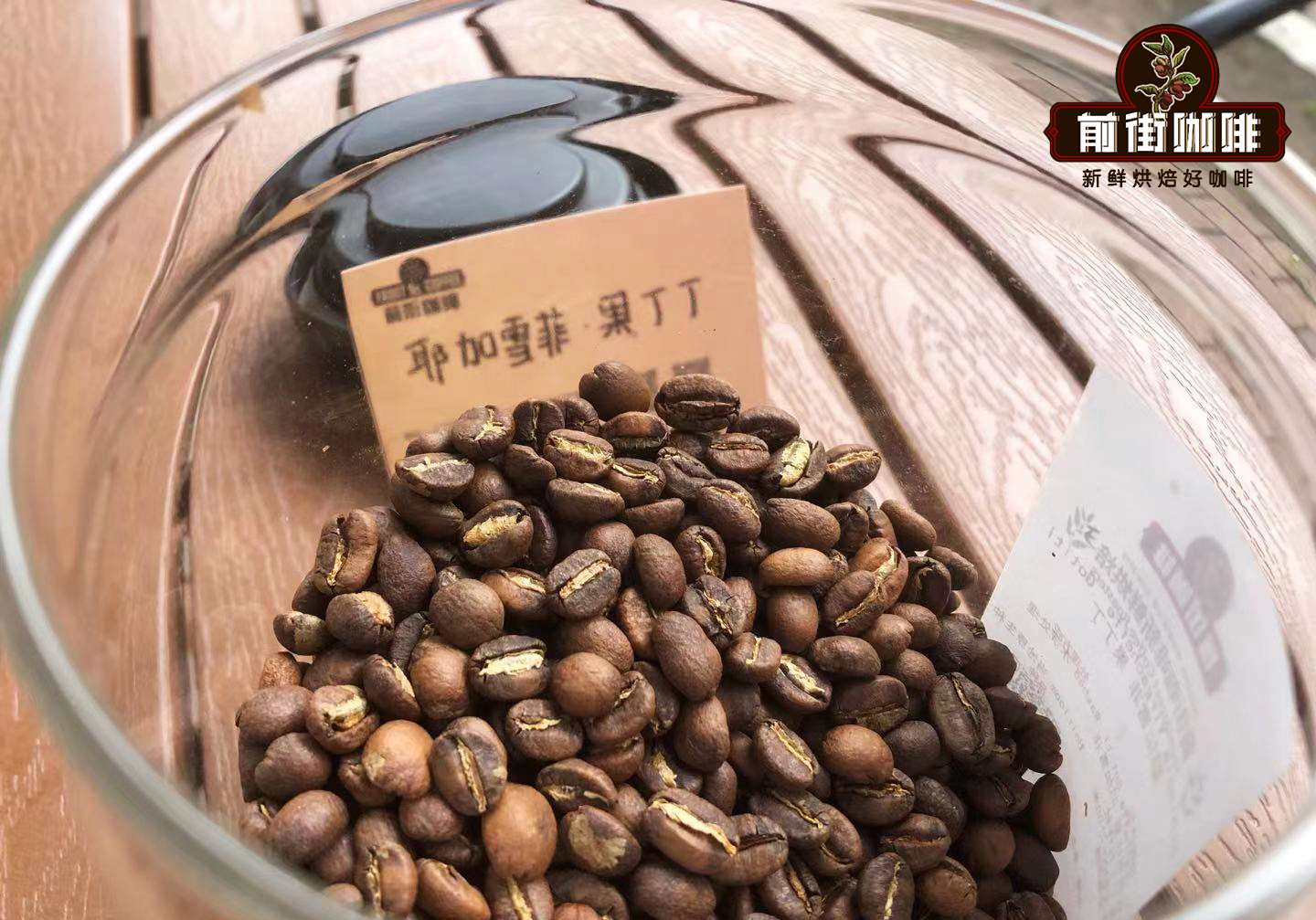
The Yega Sheffield Guoding Cooperative, located in the Waka producing area at the southeastern end of Yega Sheffield, was originally part of the Waka Cooperative under the YCFCU of the Yega Sheffield Alliance. Later, more and more people paid more and more attention to the origin of coffee beans, and unique small producing areas were excavated one by one by coffee hunters all over the world. In 2012, Guo Tintin, with about 300 members, became independent from the Waka Cooperative and established the Guotingding Cooperative. Guodingding Village was the first independent village area, and many small farmers were also members of the Waka Cooperative, so the technology of producing coffee was not to mention. The Guodingding Cooperative is known as the last piece of pure land of Yega Xuefei, so it is also a traditional way to use raw bean treatment (water washing and sun treatment). Front Street Coffee Yega Sheffield Kochel
Producing area: Esseyega Sheffield Kochel
Variety: original species (Heirloom)
Planting height: 1650m to 1800m
Treatment: washing
Grade division: G1
Flavor: citrus, berries, tea, cream, light nuts
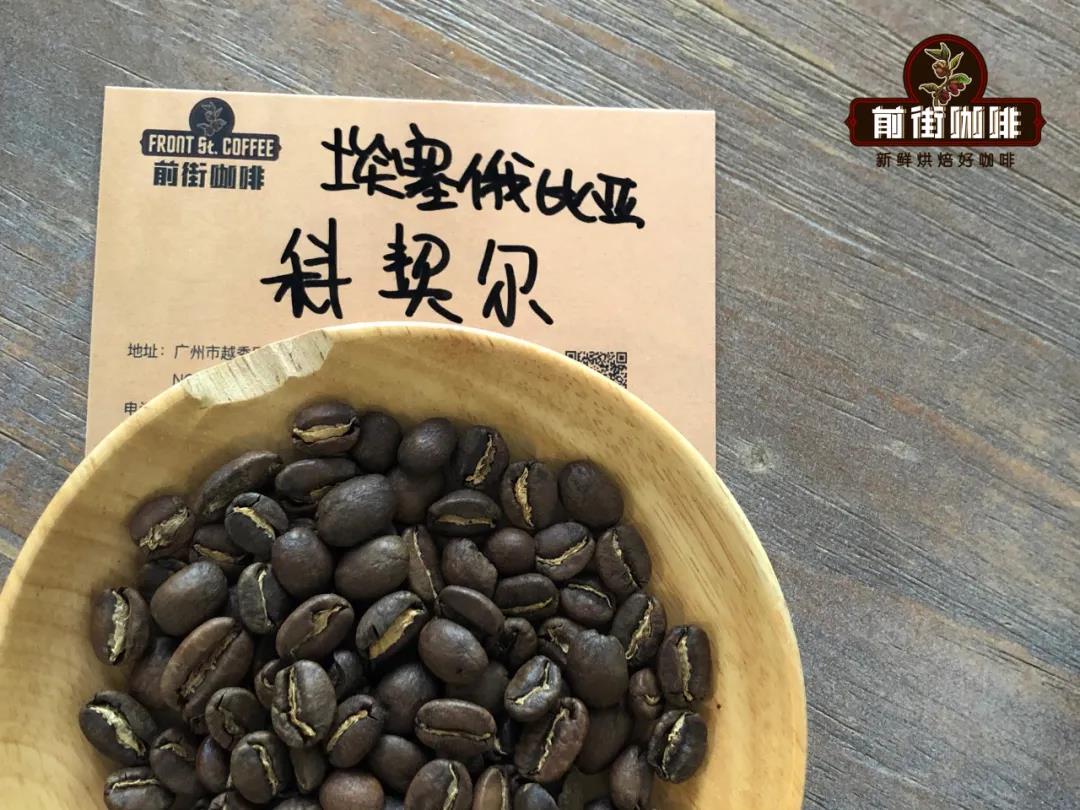
Cochel is located in a small producing area 25 kilometers southeast of Yega Sheffei, Ethiopia, with an elevation of 1650 meters to 1800 meters. It is a rich area for coffee production, and it is also one of the three famous micro-producing areas of Yega Xuefei, with about 100,000 local residents. Coffee beans are the main source of income, and the processing equipment in this area is very advanced. Coffee Review, a well-known coffee evaluation website, gave Kocher a high rating of 94 points for washed beans.
Kochere is the 77 Woreda (Ethiopian administrative region) of SNNPR in Ethiopia. In the field of coffee, Cochelle is part of Gediyo in Yirgacheffe and is one of the most important producing areas of Yirgacheffe. Cochell can also be divided into several micro-producing areas, and the coffee produced in the region is sometimes named after the source town (such as Xuelitu Chelelektu or Danbo Teklu Dembel), the processing plant (such as Danbo processing plant Teklu Dembel and this batch of Alim processing plant) or micro-area (such as Banko Gutiti), which is named in a more specific way, in line with the current trend of coffee traceability, of course, the more traceable batches The more specific the source, the higher the annual flavor stability and recurrence rate, and of course the higher the price.
Cochell's production mode is mainly based on local small farmers sending output batches to cooperatives for unified processing. The local Chalalacktu village has about 100000 people who depend on coffee for a living, and related production activities have become their main source of income. Due to the benefits brought by coffee production, the local standard of living is much better than that of many Ethiopian villages, with sound health facilities, colleges and universities, and so on. The advanced processing equipment makes the coffee in Cochell area always have a high level of performance in the field of washing treatment, with the clean and sweet complex flavors of molasses and citrus.
Yega Ficcher of Qianjie Coffee is different from the general batch of coffee raw beans belong to the highest batch G1 grade, the producing area has strong flavor characteristics, with clean and fresh lemon aroma and delicate and elegant jasmine, cantaloupe, citrus, raw cantaloupe, spice tea and other rich aroma and taste.
Qianjie Coffee Yega Sheffield Conga Cooperative
Country: Ethiopia
Manor: Kongjia Cooperative
Producing area: Yejia Xuefei
Altitude: 1300-2000m
Variety: Ethiopian native species
Treatment method: washing treatment method
Flavor: when high temperature is berries, cream, honey, citrus, juice-like taste, sour bright. When the temperature is slightly lower, it is berries, cream, smooth, citrus.
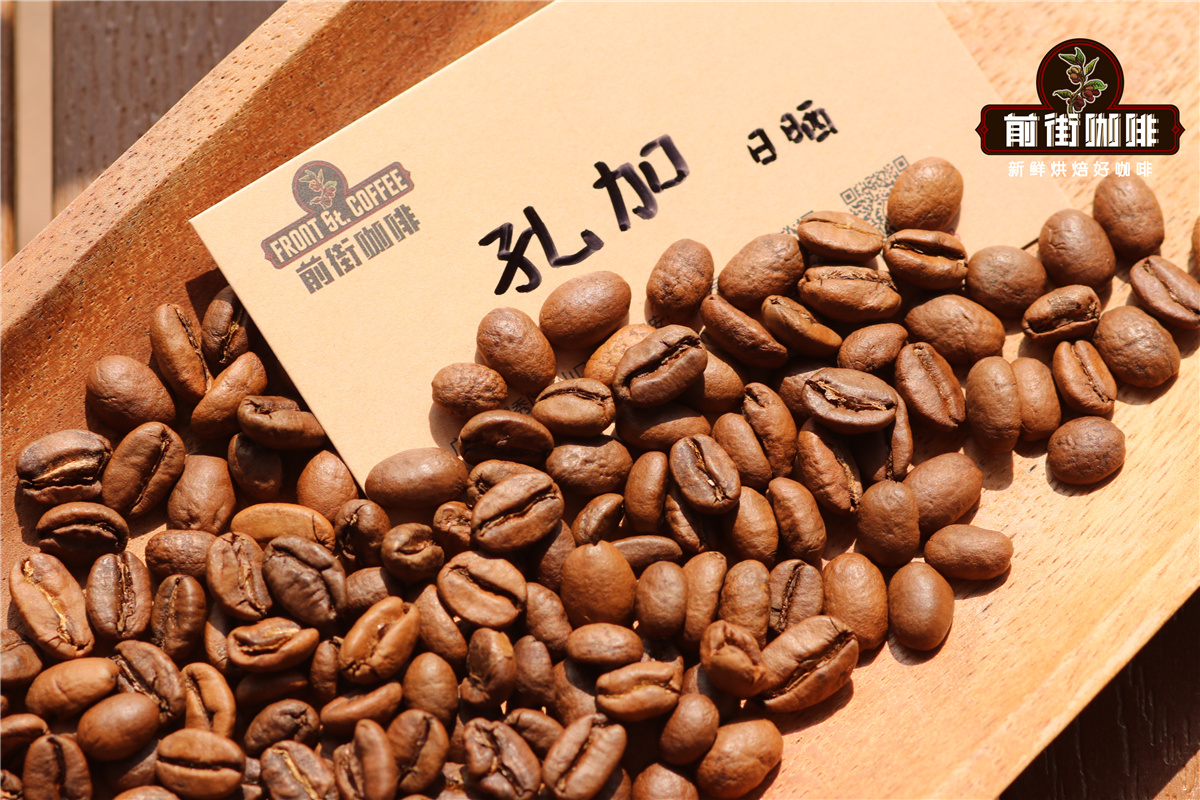
The Conga Cooperative (Konga Coop), made up of 1556 family members of small coffee farmers, located 5 km south of Yirgacheffe, was established in 1994 and joined the YCFCU Cooperative Union in 2002. The average cultivation area of these small coffee farmers is less than 1.25ha and the altitude is about 1800 to 2000 meters. The coffee varieties are mainly a mixture of Typica and Heirloom (local native species).
Every one or two years, members of the cooperative will vote in an election to elect an executive committee, and the executive committee can decide on the purchase of new equipment, exchange business information with members, and how to pay for transactions. In addition, YCFCU will also assign professional managers to cooperatives to provide guidance and advice on harvest, production and other procedures, so as to increase production and improve quality. The establishment of the cooperative allows its farmers to avoid low-cost exploitation by purchasers, and when the economy is in trouble, the cooperative can also provide loan assistance, which is very positive for both farmers and coffee production. In front of the street, there is also a Yega Chuefei on the front street of Yega Chuefei G2, which is washed and treated. G2Magi G2 represents the grade of coffee. Esser distinguishes the grade by defect rate. G1 is the best, and the number of defects in raw beans is less than 4 per 300g. G2 is less than 13 per 300g. Many people think that G1 must be better than G2. In terms of quality, raw beans are more talkative. G1 is indeed higher than G2, and the price is several times that of G2. When it comes to cooked beans, it can be said that the difference will not be too much, but the price will be even bigger.
Qianjie is well aware that defective beans will affect coffee roasting, so it will be hand-selected before roasting to pick out obvious defective beans, so after this process, there is no difference between G1 and G2. Those who know coffee can choose G2 without hesitation, one reason is that the price of 25 yuan / 100g is really delicious, and the price of cooked beans is 30 yuan cheaper than G1. Second, if you are familiar with Essel coffee beans, you will find that the really sweet fruit flavor comes from small particles, while G1 tends to be large particles to some extent, while G2 is more uneven between large and small particles. On the contrary, it can better highlight the flavor of Yejia Xuefei.
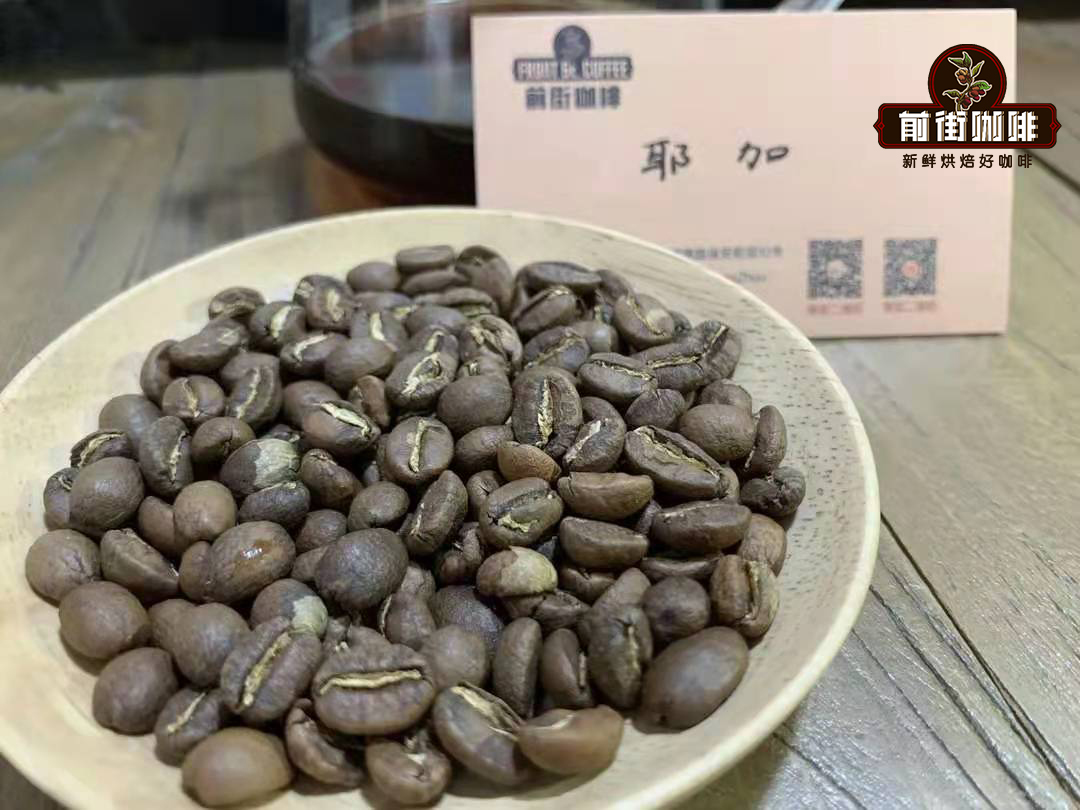
Roasting Analysis of Qianjie Coffee
Qianjie baking plans to use the representative red cherry and fruit Tintin in the sun and water washing of Yega Chuefei as an example.
Sun red cherries, Qianjie will conduct two rounds of manual screening of defective beans before baking, hand selection before baking can lay the foundation for baking quality coffee. This sun-tanned cherry coffee has very few defects. Yangjia 800N, bean 600g: furnace temperature to 200 degrees Celsius, throttle set 3.5 degrees Celsius 1 minute, adjust firepower 160 degrees, throttle unchanged, 148 degrees adjust firepower, drop to 130 degrees, bake to 5: 03 ", temperature 151 degrees, bean surface turns yellow, grass smell disappears completely, dehydration is completed, firepower is adjusted to 105 degrees, throttle is opened to 4 degrees. In the 8th minute, ugly wrinkles and black markings appear on the bean table, and the smell of toast obviously changes to the smell of coffee, which can be defined as a prelude to an explosion. At this time, listen carefully to the sound of the explosion point, start the explosion at 9:07, and adjust the firepower to 70 degrees Celsius. The throttle is fully open (the firepower should be very careful not to be so small as to be free of bursting sound), and put into the pot at 194C.
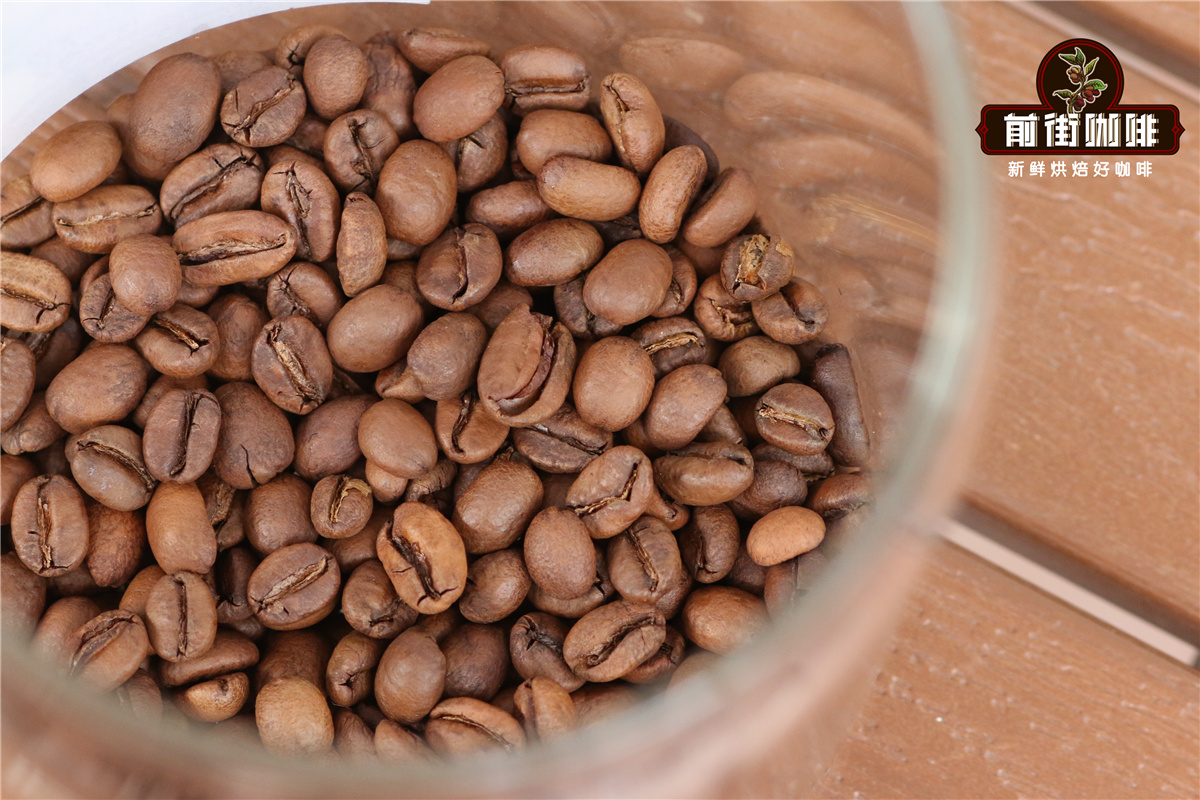
The front street baker considers that the bean is mainly represented by the acidity of the fruit, which is more suitable for the shallow baking method, which will highlight the clean taste, bright acidity and obvious taste.
Using the Yang family 800N, the amount of beans: 480g: furnace temperature to 175C ℃ into the pot, throttle open 3, firepower is 120,140℃, when the firepower is unchanged, the throttle opens to 4; at this time the bean table turns yellow, the smell of grass completely disappears, enters the dehydration stage, when the firepower drops to 100176 ℃, the firepower drops to 80, and the throttle remains unchanged. The smell of toast obviously changes to the smell of coffee, which can be defined as a prelude to an explosion. At this time, it is necessary to listen carefully to the sound of the explosion point. When the sound of the explosion starts, adjust the throttle to 5 (the tuning power should be very careful, not so small as to be so small that there is no burst sound). After an explosion, the development of 1 cup 39th 30 ", 193.5 ℃ into the pot.
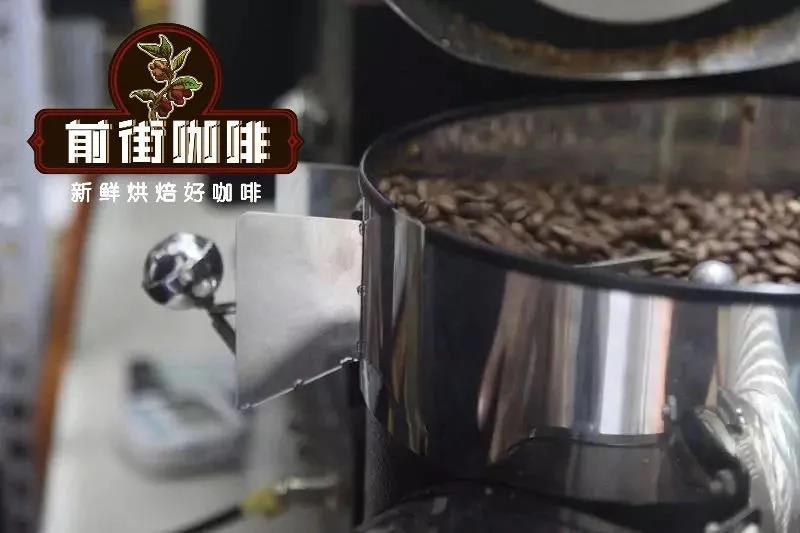
Washing and cooking technique
Qianjie coffee is recommended to use a V60 filter cup, the water temperature is 90 ℃ (you can launch water at 90.5 ℃), the ratio of water to powder is 1:15, the amount of powder is 15g, and the grindness is BG#6M (the pass rate of China No. 20 standard sieve is 80%). Here, Qianjie coffee should be mentioned, why should it be screened before determining the degree of grinding? in fact, this is the grinding advice provided by the American Fine Coffee Association SCA for hand-brewed coffee. Qianjie coffee has been widely verified and brewed with different degrees of grinding, and there is a significant gap in the finished products, and the degree of grinding of each type of coffee beans will be different, which is the meaning of sifting. If you don't have a sieve at home, Qianjie Coffee suggests observing the speed of the water to judge that if the flow is too fast, it is coarse, and if the flow is too slow, it is fine.
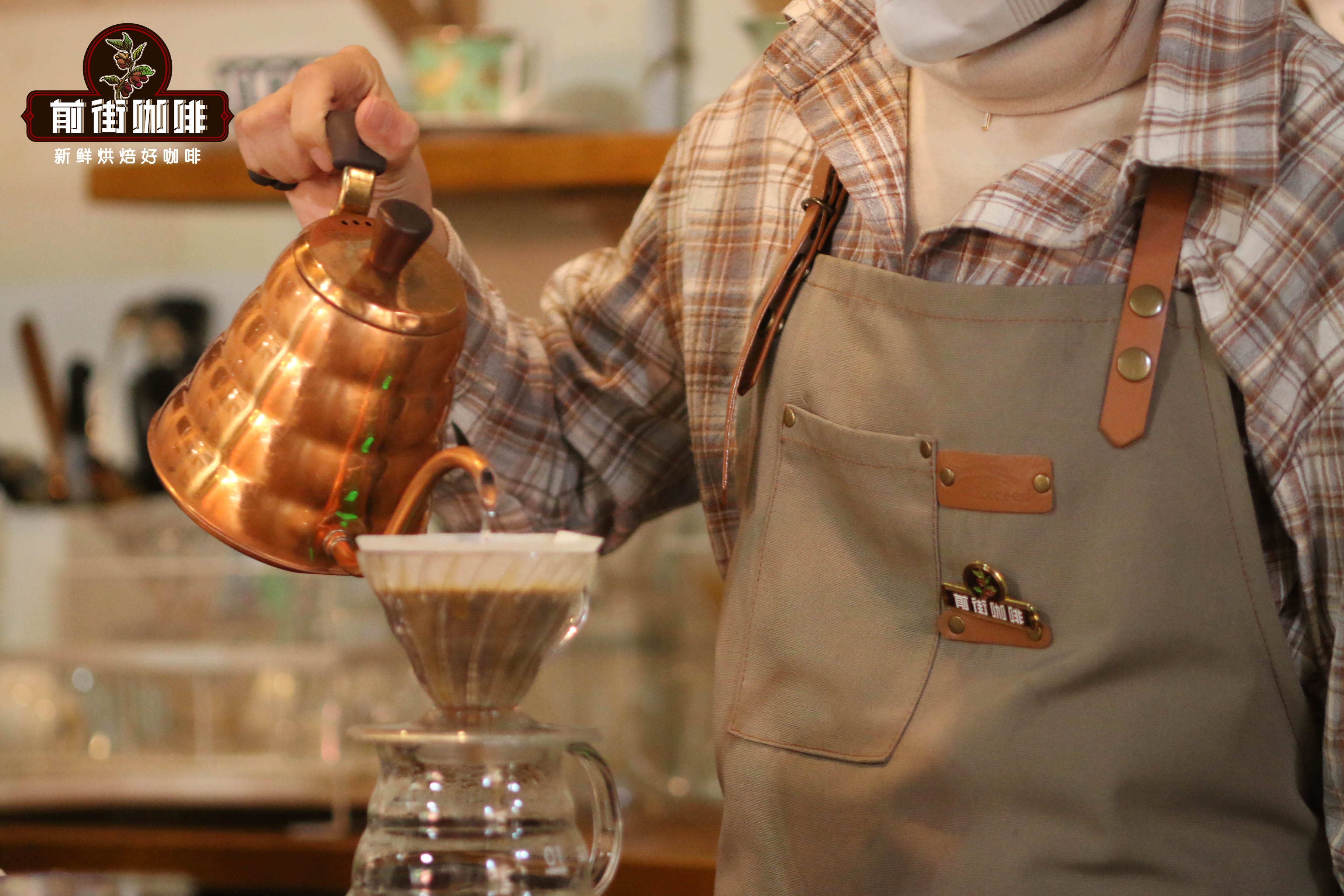
First wet the filter paper and preheat the filter cup and the coffee pot. In the first stage, 30 grams of water is injected for 30 seconds, followed by 95 grams (about 125 grams indicated by the electronic scale). The injection is completed in about 1 minute, and the remaining 100 grams are injected at 3 places in the powder layer (about 225 grams shown by the electronic scale) in about 1 minute and 35 seconds. 2 minutes 05 seconds drip filtration is completed, remove the filter cup, complete the extraction.
Professional coffee knowledge exchange more coffee bean information please follow the coffee workshop (Wechat official account cafe_style)
For more boutique coffee beans, please add private Qianjie coffee on Wechat. WeChat account: kaixinguoguo0925
Important Notice :
前街咖啡 FrontStreet Coffee has moved to new addredd:
FrontStreet Coffee Address: 315,Donghua East Road,GuangZhou
Tel:020 38364473
- Prev
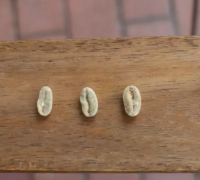
The difference between Rose Xia and Yejia Xuefei, the characteristics of boutique coffee Yega Xuefei.
Professional baristas Please follow the Coffee Workshop (official Wechat account cafe_style) when it comes to rose beans, we have to mention the emerald estate in Panama. In addition to the world-famous summer roses, Jade Manor has repeatedly created amazing transaction records. Daniel was the first coffee farmer to find the unique flavor of rose summer by cup test, and the first to detect it in a formal coffee competition.
- Next

Introduction to individual Coffee: the respective flavor characteristics of Rosa Coffee and Ye Jia Xuefei. Is it good to drink by hand?
Professional baristas Please follow the Coffee Workshop (official Wechat account cafe_style) when it comes to rose beans, we have to mention the emerald estate in Panama. In addition to the world-famous summer roses, Jade Manor has repeatedly created amazing transaction records. Daniel was the first coffee farmer to find the unique flavor of rose summer by cup test, and the first to detect it in a formal coffee competition.
Related
- Detailed explanation of Jadeite planting Land in Panamanian Jadeite Manor introduction to the grading system of Jadeite competitive bidding, Red bid, Green bid and Rose Summer
- Story of Coffee planting in Brenka region of Costa Rica Stonehenge Manor anaerobic heavy honey treatment of flavor mouth
- What's on the barrel of Blue Mountain Coffee beans?
- Can American coffee also pull flowers? How to use hot American style to pull out a good-looking pattern?
- Can you make a cold extract with coffee beans? What is the right proportion for cold-extracted coffee formula?
- Indonesian PWN Gold Mandrine Coffee Origin Features Flavor How to Chong? Mandolin coffee is American.
- A brief introduction to the flavor characteristics of Brazilian yellow bourbon coffee beans
- What is the effect of different water quality on the flavor of cold-extracted coffee? What kind of water is best for brewing coffee?
- Why do you think of Rose Summer whenever you mention Panamanian coffee?
- Introduction to the characteristics of authentic blue mountain coffee bean producing areas? What is the CIB Coffee Authority in Jamaica?

